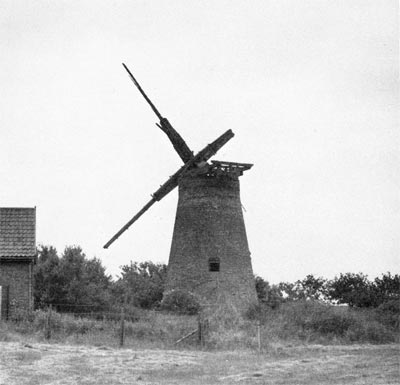
|
Mautby
Marsh Farm drainage pump River Bure |
 |
|
10th
July 1973
|
|
Mautby Marsh Farm mill was 3 storey Norfolk red brick towermill built to drain the marshes into the River Bure. Windpower was supplemented by and eventually replaced by a Ruston & Hornsby oil engine that worked there from 1919 to 1968. |
|
When the above photograph was taken in 1973 the mill was becoming derelict. The cap had gone and only 1¾ of the sail stocks remained along with fragments of one sail. The windshaft, brakewheel and all the running gear including the large scoop wheel were still intact. |
To be Sold. |
At Mawtby, in Norfolk, A Skeleton Engine, which works by Wind, and is able to work two Pumps that will drain off thirty or forty Acres of Marsh Land; it is in good Repair. Enquire of Mr Edmund Woodcock, Millwright at Yarmouth. Norfolk Chronicle - 15th March 1783 |
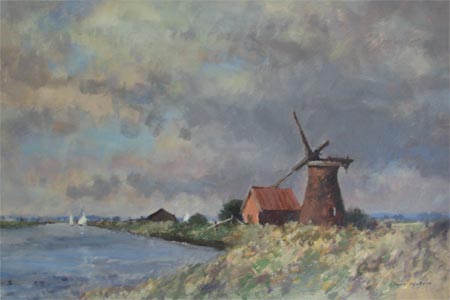 |
Oil painting by Owen Waters c.1974 |
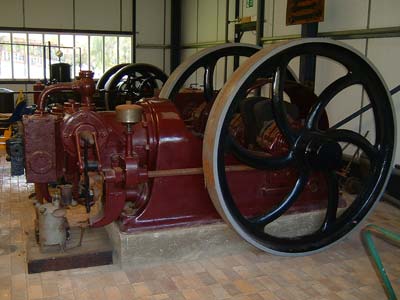 |
|
Mautby's
Ruston & Hornsby oil engine October 2004
|
|
On 26th September
1919 E. Lacon & Son, brewers in Gt. Yarmouth, bought a Ruston &
Hornsby oil engine to supplement windpower at the mill. As yet it is not
known why a large brewing firm would have an interest in a remote section
of grazing marsh. The engine was supplied and installed by local millwrights |
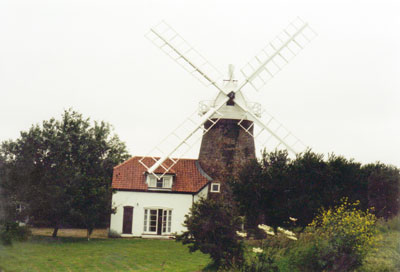 |
c.1994 |
The mill in its derelict state was bought by two ladies from London (I believe) as a retirement home and at considerable expense had the mill converted and the build on the side. |
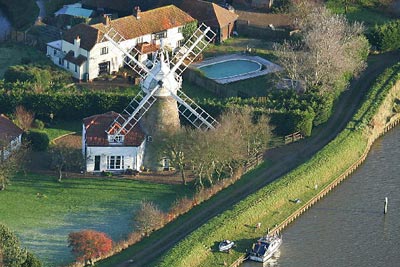 |
9th December 2006 |
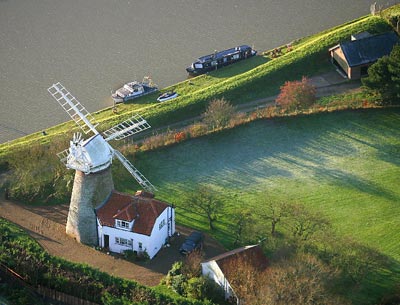 |
9th December 2006 |
We moved into the mill in 2003 and certainly enjoy living here. We sleep on the first floor of the mill and have grown used to the creaking noises at night, in fact we seldom notice them. Recently the gale force winds caused the top five feet of one of the uppermost sails to break off. We are hoping to get this repaired sometime in the future but the cost is prohibitive at the moment. |
I was intrigued to view the entry on your website about Mautby Marsh
windpump and to see the photographs of its current condition as well
as some of the historical background. |
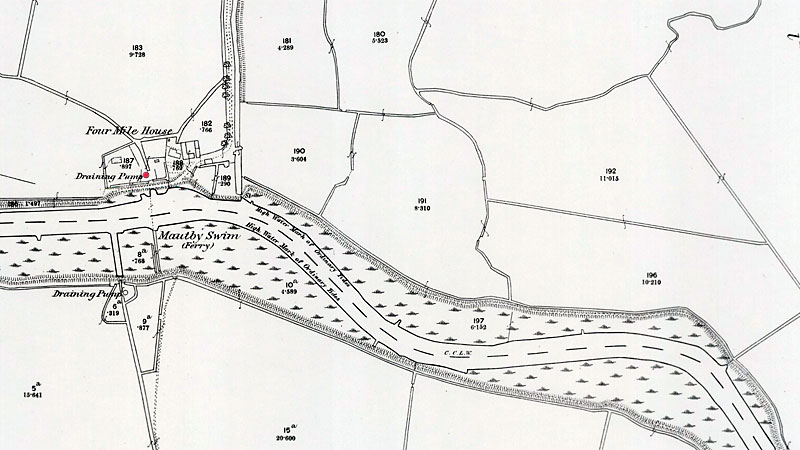 |
|
O. S. Map 1884 Courtesy of NLS map images |
March 1783: Skeleton pump advertised for sale
c.1980: Mill renovated and converted to residential use by Yarmouth solicitor |
If you have any memories, anecdotes or photos please let us know and we may be able to use them to update the site. By all means telephone 07836 675369 or
|
| Nat Grid Ref TG 48950992 |
Copyright © Jonathan Neville 2004 |